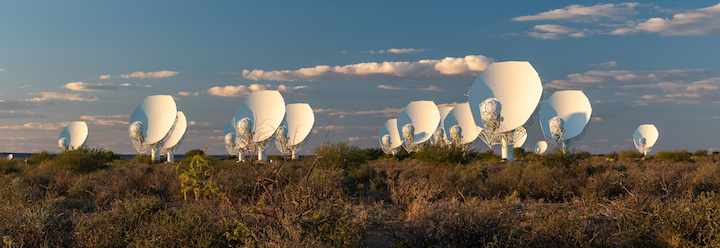26.03.2019
The Department of Science and Technology (DST) has welcomed the adoption of the Integrated Environmental Management Plan (IEMP) for phase one of the Square Kilometre Array (SKA) in South Africa.
On Friday, 22 March 2019 the Minister of Environmental Affairs, Ms Nomvula Mokonyane, gazetted the adoption of the Integrated Environmental Management Plan (IEMP) for the Square Kilometre Array Phase 1 Mid-Frequency Array (SKA1_MID) in South Africa.

The Department of Science and Technology (DST) has welcomed the adoption of the Integrated Environmental Management Plan (IEMP) for phase one of the Square Kilometre Array (SKA) in South Africa.
The IEMP is the environmental management instrument for SKA1_MID (and an exclusion for requiring environmental authorisation in terms of NEMA), and is the first of a number of licenses required for the construction of the radio telescope in the Karoo region of South Africa.
This is the first time, at a national level, that an environmental instrument like the IEMP has been adopted in South Africa. This approach has been provided for in terms of Chapter 5 of the National Environmental Management Act, to enable for the streamlining and simplification of the environmental legislative framework for large-scale strategic developments such as the SKA. The IEMP provides a consolidated management plan including the minimum requirements for the construction and operation phases of the SKA1_MID, and includes the environmental principles to be adopted, the environmental monitoring and control activities, as well as the long-term research monitoring programmes to be implemented on the SKA site in the Karoo.
“The development of the IEMP for the first phase of the SKA, and the gazetting of its adoption by Minister Mokonyane, is yet another milestone towards the realisation of the SKA mid-frequency array in South Africa. It follows soon after the signing of the SKA Convention (and the forming of the Intergovernmental Organisation), and one month after the approval of the detailed design of the infrastructure and power for the SKA in South Africa,” said Dr Rob Adam, Managing Director of the South African Radio Astronomy Observatory.
The MeerKAT and the SKA projects are one of the 18 Strategic Integrated Projects (SIPs), of the Presidential Infrastructure Coordinating Committee (PICC), which was established to fast-track the development of social and economic infrastructure in the country. The Department of Environmental Affairs has committed to working with the PICC to facilitate efficient environmental management processes for the various SIPs.
The Council for Scientific and Industrial Research (CSIR) was appointed to undertake the SKA1_MID Strategic Environmental Assessment (SEA). The SEA study, which took three years to complete, covered an area of approximately 628,200 hectares of land in the Karoo, divided into two sub-areas: The “SEA Core Study Area”, which consists of 38 land parcels, and covers an area of approximately 131 200 hectares; and the “SEA Spiral Arm Study Area”, which includes 131 land parcels, and covers an area of approximately 497,000 hectares. The overall study area falls within four local municipalities: the Kareeberg Local Municipality, the Hantam Local Municipality, the Siyatemba Local Municipality and the Karoo-Hoogland Local Municipality. The largest towns surrounding the SEA study area are Carnarvon, Williston, Van Wyksvlei and Brandvlei.
The SEA process was guided by a Special Advisory Committee, which included key government departments and state agencies. In addition, provincial and local government consultations were undertaken to further inform local and provincial authorities. Consultations with other key stakeholders from conservation agencies and representatives from other key sectors (e.g. Civil Aviation, Defence, Heritage Resources) also took place, to share information and obtain inputs and expert advice on specific issues/technical aspects of the SEA.
The SEA assessed the potential impacts that the proposed activities for the construction and operation of the SKA1_MID may have on local agriculture, heritage (including archaeology, paleontology, cultural heritage and visual/landscape aspects), terrestrial ecology and biodiversity, including avifauna, aquatic ecosystems, as well as socio-economic aspects. Specialist findings and recommendations were included in Chapter 3 (State of the Environment), Chapter 5 (Environmental Management Programme) and Chapter 6 (Research and Monitoring Programmes) of the IEMP. Further aspects of sensitivity in terms of aviation, defence, telecommunications, weather services, mining, water use, waste management, noise and traffic effects were also investigated in consultation with the relevant authorities and stakeholders. The specialist reports were reviewed by independent experts, who provided input and contributed to improving the scoping level.
The National Research Foundation, through its national facility, the South African Radio Astronomy Observatory, and the International SKA Organisation, will now be required to comply with the conditions contained in the Government Gazette Notice.
Quelle: SKA South Africa
